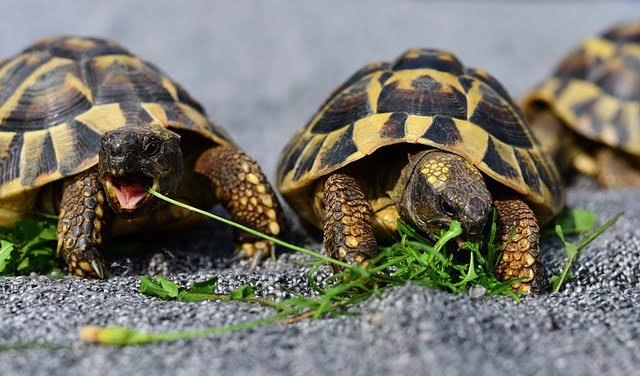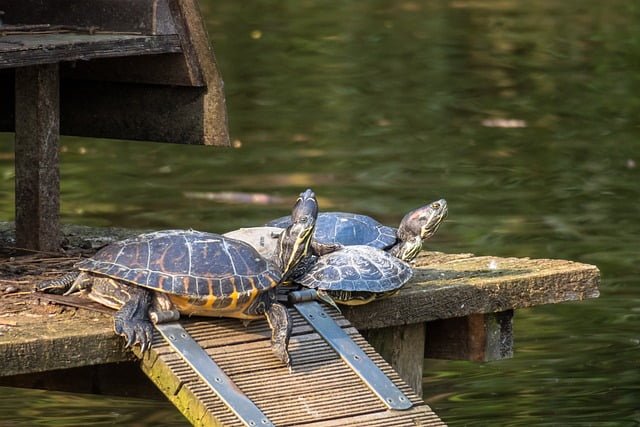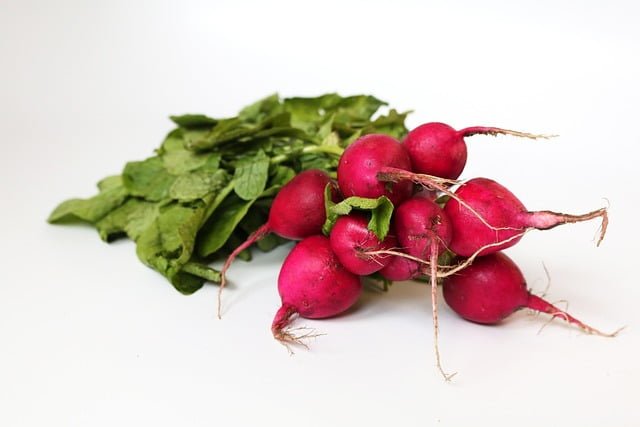Sulcata tortoises are known for their herbivorous diet, and it’s important for their owners to provide them with a variety of fresh vegetables and fruits to ensure they receive all the necessary nutrients. Radishes are one vegetable that some tortoise owners may be curious about feeding their pets, but it’s important to consider whether or not radishes are a safe and healthy option for sulcata tortoises.
When it comes to feeding sulcata tortoises, it’s important to be mindful of the types of foods you offer them. While some vegetables and fruits are safe and nutritious for these tortoises, others can be harmful or even toxic. Radishes are a root vegetable that can be fed to sulcata tortoises in moderation, but it’s important to understand the potential risks and benefits before adding them to your pet’s diet.
Overall, the decision to feed radishes to your sulcata tortoise will depend on a variety of factors, including your pet’s individual dietary needs and preferences. By understanding the nutritional content of radishes and consulting with a veterinarian or experienced tortoise owner, you can make an informed decision about whether or not to include this vegetable in your pet’s diet.

Understanding Sulcata Tortoises
Habitat
Sulcata tortoises, also known as African spurred tortoises, are native to the Sahara Desert in Africa. They are well adapted to living in hot and dry environments and can withstand high temperatures. In the wild, they live in burrows that they dig in the ground to escape the heat and predators.
In captivity, it’s important to provide sulcata tortoises with an environment that mimics their natural habitat. This includes a large enclosure with plenty of space to move around, basking areas with heat lamps, and a substrate that allows for digging.
Dietary Habits
Sulcata tortoises are herbivores and eat a variety of plants. In the wild, their diet consists of grasses, leaves, and flowers. In captivity, it’s important to provide them with a varied diet that includes a mix of different plants.
When feeding sulcata tortoises, it’s important to avoid foods that are high in oxalates, such as spinach and kale. These can bind to calcium and prevent it from being absorbed, which can lead to health problems.
In conclusion, understanding the habitat and dietary habits of sulcata tortoises is important for keeping them healthy in captivity. By providing them with an environment that mimics their natural habitat and a varied diet that meets their nutritional needs, we can ensure that they thrive in our care.
Radishes in a Tortoise Diet
Nutritional Value
Radishes are a good source of vitamin C, potassium, and fiber. They also contain small amounts of other vitamins and minerals, such as calcium, iron, and magnesium.
Potential Risks
While radishes can be a healthy addition to a tortoise’s diet, they should be fed in moderation. Too many radishes can cause digestive upset and diarrhea. Additionally, some tortoises may be allergic to radishes or have trouble digesting them.
It is important to note that radishes should never be the sole or primary food source for a tortoise. A varied diet that includes a range of vegetables, fruits, and other foods is essential for a tortoise’s health and well-being. As always, it is best to consult with a veterinarian or reptile specialist to determine the best diet for your individual tortoise.

Incorporating Radishes into Sulcata Tortoise’s Diet
Frequency
When it comes to feeding radishes to Sulcata tortoises, it’s important to do so in moderation. While radishes are a healthy addition to their diet, they should not be a staple food item. We recommend feeding radishes to your Sulcata tortoise no more than once or twice a week.
Preparation Methods
There are a few different ways to prepare radishes for your Sulcata tortoise. One option is to chop them up into small pieces and mix them in with their regular food. Another option is to slice them into thin rounds and offer them as a separate food item. We recommend washing the radishes thoroughly before feeding them to your tortoise.
It’s important to note that radish greens are also safe for Sulcata tortoises to eat and can be a nutritious addition to their diet. However, like with the radish root, they should be fed in moderation.
Overall, incorporating radishes into your Sulcata tortoise’s diet can provide them with some added nutritional benefits. Just remember to feed them in moderation and to always wash them thoroughly before offering them to your tortoise.
Alternatives to Radishes for Sulcata Tortoises
When feeding our Sulcata Tortoise, it’s important to provide a varied and balanced diet. While radishes can be a healthy treat for them, we should not rely solely on them. Here are some alternative foods that we can offer to our Sulcata Tortoise:
- Leafy greens: Leafy greens such as kale, collards, mustard greens, and dandelion greens are excellent sources of vitamins and minerals for our Sulcata Tortoise. We should aim to provide a variety of leafy greens to ensure a balanced diet.
- Hay: Hay is a great source of fiber for our Sulcata Tortoise. We can offer them grass hay or timothy hay. We should make sure that the hay is fresh and free of mold.
- Vegetables: Vegetables such as carrots, squash, and sweet potatoes can be a healthy addition to our Sulcata Tortoise’s diet. We should avoid feeding them vegetables that are high in oxalic acid, such as spinach and beet greens.
- Fruits: Fruits such as apples, bananas, and berries can be a tasty treat for our Sulcata Tortoise. However, we should be mindful of the sugar content in fruits and offer them in moderation.
In addition to these foods, we can also offer our Sulcata Tortoise commercial tortoise food. Commercial tortoise food can provide a balanced diet and should be used as a supplement to fresh foods.
It’s important to remember that while these foods are healthy for our Sulcata Tortoise, we should always research and consult with a veterinarian before introducing new foods to their diet.
Conclusion
In conclusion, while radishes are not toxic to sulcata tortoises, they should not be a regular part of their diet. Sulcata tortoises are herbivores and require a diet that is high in fiber and low in protein. Radishes are low in fiber and high in protein, which can cause digestive issues and kidney damage if consumed in excess.
It is important to provide your sulcata tortoise with a balanced diet that includes a variety of leafy greens, vegetables, and fruits. Some good options include collard greens, dandelion greens, kale, mustard greens, and turnip greens. Fruits like strawberries, apples, and pears can also be given in moderation as treats.
Remember to always provide fresh, clean water for your sulcata tortoise to drink and soak in. It is also important to monitor their weight and overall health regularly to ensure they are getting the proper nutrition they need.
Overall, while radishes may be safe for sulcata tortoises to eat in small amounts, it is best to stick to a diet that is specifically tailored to their nutritional needs.

Frequently Asked Questions
What vegetables can tortoises eat?
Tortoises can eat a variety of vegetables, including leafy greens such as kale, collard greens, and dandelion greens. They can also eat vegetables like carrots, squash, and green beans. It’s important to provide a variety of vegetables to ensure a balanced diet.
Can tortoises eat cucumber?
Yes, tortoises can eat cucumber. It’s a good source of hydration and can be a healthy addition to their diet. However, it’s important to feed cucumber in moderation, as it can cause digestive issues if fed in large amounts.
Can red foot tortoise eat radish?
Red foot tortoises can eat radish, but it’s important to feed it in moderation. Radish is high in oxalic acid, which can bind to calcium and prevent its absorption. This can lead to metabolic bone disease if fed in excess.
Can tortoises eat tomatoes?
Tortoises can eat tomatoes, but they should be fed in moderation. Tomatoes are high in acid and can cause digestive issues if fed in large amounts. It’s important to remove the seeds and skin before feeding, as they can be difficult to digest.
Can a tortoise eat carrots?
Yes, tortoises can eat carrots. They are a good source of vitamin A and can be a healthy addition to their diet. However, it’s important to feed carrots in moderation, as they are high in sugar.
What vegetables can sulcata tortoises not eat?
Sulcata tortoises should not be fed vegetables that are high in oxalic acid, such as spinach, beet greens, and Swiss chard. They should also avoid vegetables that are high in sugar, such as corn and peas. Additionally, sulcata tortoises should not be fed iceberg lettuce, as it has little nutritional value and can cause digestive issues.





